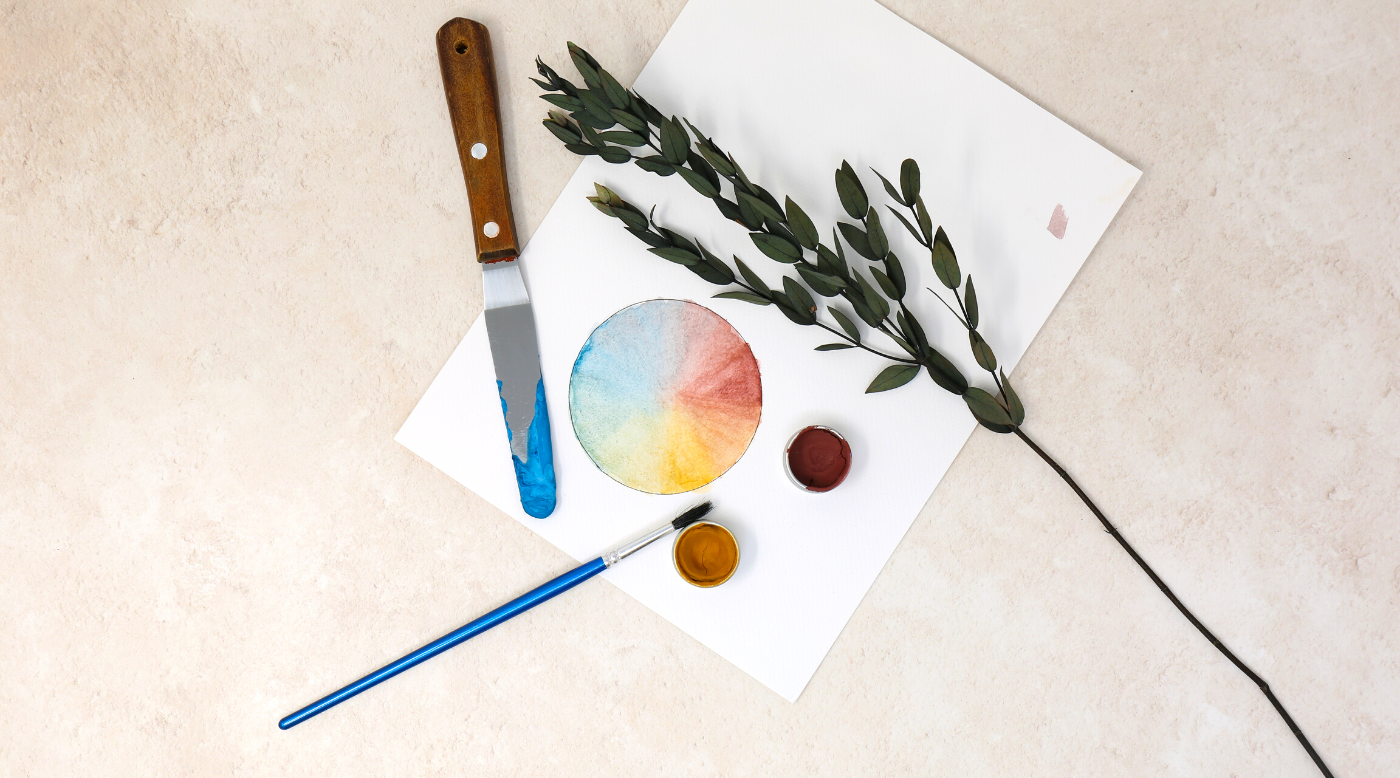Why we love working with natural pigments
Are you getting bored with your craft projects? Even with art, it can be easy to fall into a routine and forget what made us fall in love with crafting in the first place. Luckily, there are some simple solutions to get your creative spark back.
A good way of getting out of an art block is to change the materials you’re using. Have you ever thought about trying to incorporate some natural pigments into your crafting projects? They bring a world of possibilities, depth and interesting challenges! In this article, we’ll explore the benefits of using natural pigments, as well as some ideas on how to use them for your next project. We love the them so much that we included natural pigments in our Watercolours Making Kit!
Benefits of using natural pigments
A rich history
Using natural pigments will connect you to a wonderful history of artistry. Many of the world’s greatest artists have used natural pigment in their work, and using it yourself will allow you to become part of this creative tradition.
Humanity has been using natural pigments for as long as it has existed. In prehistoric times, pigments were made from crushed rocks and minerals and used on the walls of caves to depict scenes of everyday life. One of the oldest figurative artworks in the world was an image of a pig drawn in ochre pigment some 45000 years ago.
Later on, natural pigments became more refined as ancient civilisations discovered new ways to harvest colours. The ancient Egyptians used them in murals and cosmetics, with Cleopatra wearing eyeshadow made from powdered Lapis Lazuli. The Romans and the Greeks also used natural pigments to create frescoes and mosaics.
During the Renaissance, natural pigments were still incredibly popular among artists. With some pigments being expensive and difficult to get, using certain colours was also a symbol of wealth and status both for the artist and for the subject of the painting.
The 19th and 20th centuries saw a rise in synthetic pigments. Cheaper and with a greater variety of colours, they started to replace natural pigments in many areas of life, from painting to clothes and makeup.
There is still a strong community of artists working with natural pigments today. Though synthetic pigments are easy to get, there is a strong satisfaction and freedom of expression that comes with making your own materials from pigments.

Creative Freedom
Natural pigments have some unique characteristics, allowing artists to create deeply personalised artwork from start to finish. Each pigment has its texture, colour and properties. They can be used by themselves or mixed to make bespoke materials.
One of the main advantages of learning to use pigments in your art is to be able to create your own colour palette. There are hundreds of different types of pigment, each with their colour, and they can be mixed in an infinity of ways to reflect your artistic vision. This means you can get colours that do not exist in shops! It will also give a fantastic grasp of colour theory.
Because a lot of natural pigments are made from rocks and minerals, they each have different properties. This means that even ground, they can retain some of their consistency and add texture to your project. They can be finely ground to minimise this effect, or they can be used as a thicker paste to create depth and grain in your work.
All in all, working with your handmade pigments will allow you to have total creative control over your art. Because making pigments is such a personal process, you can be sure that no one else will work with the same material as you, making your work unique. From bespoke shades to perfect textures, you’ll be able to translate exactly what is in your head onto the canvas.

Sustainability
A huge advantage of working with pigments is that you will know exactly what goes into your paint or dye. Just as our Watercolours Making Kit lets you make your own watercolour paints from natural ingredients, you can also make oil paints with some linseed oil and a muller, or some dye with the help of soybeans.
While some brands do make an effort to make their art supplies more sustainable and environmentally friendly, working with natural pigments will ensure you’re happy with what you use. It will also allow you to get a better understanding of the process behind paint-making, meaning you’ll be more discerning when buying art supplies in the future.
As always with natural materials, make sure to properly research the pigments you want to work with. Natural does not always mean safe! Many commercially available paints have toxic ingredients that are there to preserve the paint, make it more vibrant, or simply make it cheaper. By researching pigments and knowing which ones are safe to use in which condition, you’ll be able to make informed decisions regarding your art and your health!

Getting started with natural pigments
Now that we’ve explored some benefits of using natural pigments, let's get some ideas on how you can use them in your next projects.
- Watercolour Paints: Watercolour paint is one of the easiest and most satisfying ways of using pigments. Our Watercolour Paints Kit contains everything you need to get started making your watercolours and learning about how to use natural pigments.
- Soap making: Natural pigments can be used to create beautiful, natural soaps by adding colour and texture. Always make sure to research that the pigment you want to use is skin-safe, and remember to do a skin patch test before using the soap on your whole body!
- Papermaking: Pigments can be used to create unique papers, with wonderful shades and textures. You can then use the paper for drawing, collages, or to make notebooks.
- Textile Dyeing: Some natural pigments can be used to create beautiful patterns onto fabric. You can look into the Japanese art of Shibori for some inspiration.
- Pottery: Mixing some pigments into the clay will result in unique colourful sculptures. It might also make the clay behave slightly differently, resulting in all kinds of interesting challenges and results.

As always with art, the sky is the limit. Natural pigments are a fun way to challenge your creativity and get interesting, unique artworks that showcase your newfound knowledge. Make sure to tag your natural pigment experiments with #madewithourhands!

